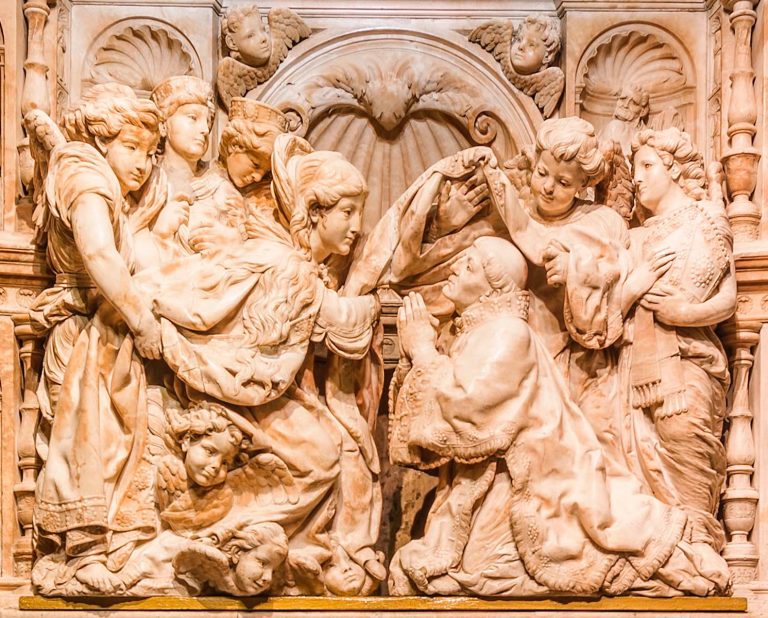Cloe Cavero de Carondelet
Reframing a Medieval Miracle in Early Modern Spain: The Origins of Our Lady del Sagrario of Toledo
Cloe Cavero’s new book chapter reconstructs the process of transformation of the image of Our Lady del Sagrario into the contact relic of the Virgin’s Descent by examining a series of artistic retoolings and spatial relocations within Toledo Cathedral.
The archbishops and cathedral canons of Toledo, who endorsed transforming the image’s status, accomplished a twofold goal: to supply the Spanish Cathedral with new relics of the Virgin’s Descent after centuries of relic scantiness, and to fulfill the increasingly compelling need for miraculous cult images in late sixteenth-century Spain. At least from the thirteenth to approximately the turn of the seventeenth century, Toledo Cathedral lacked a preeminent relic by means of which to venerate the Virgin’s Descent into the local space. This article explores how a series of cultic reconsiderations, relic inventions, artistic retoolings, and spatial relocations within Toledo Cathedral reconfigured the wooden image of Our Lady del Sagrario as a contact relic of the Virgin’s touch. Remarkably, Our Lady del Sagrario became the prevailing sacred image to orient the liturgical space and to testify to the historical narratives of the new Sagrario chapel.
This book chapter is in close dialogue with the arguments discussed in Cloe Cavero’s article “The Virgin Embracing the Virgin: Eugenio Cajés’ Short-Lived Iconography of Our Lady del Sagrario in Counter-Reformation Toledo,” Bulletin of Spanish Studies 96:6, 2019, 921-950.






